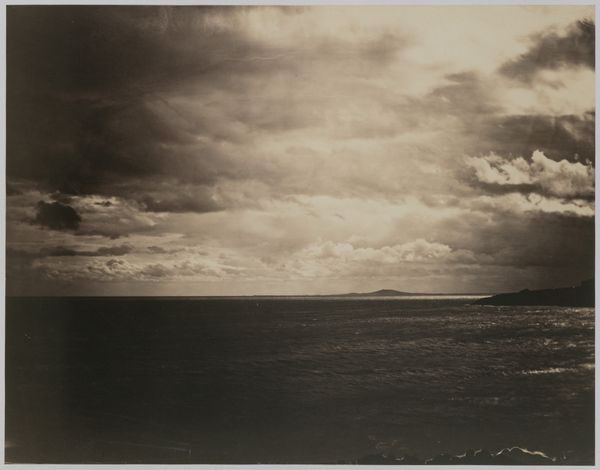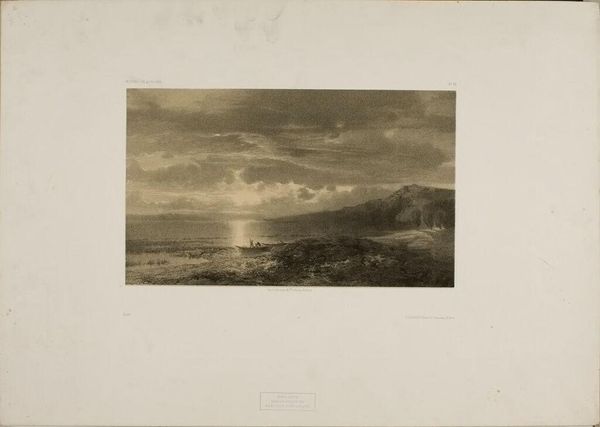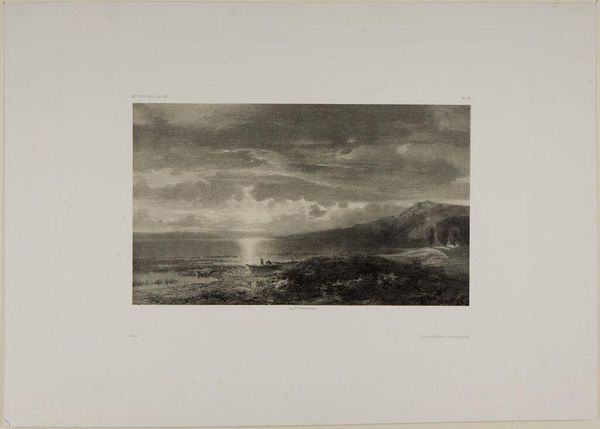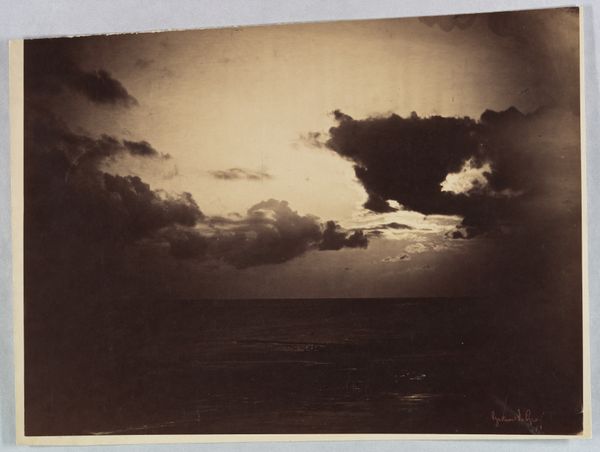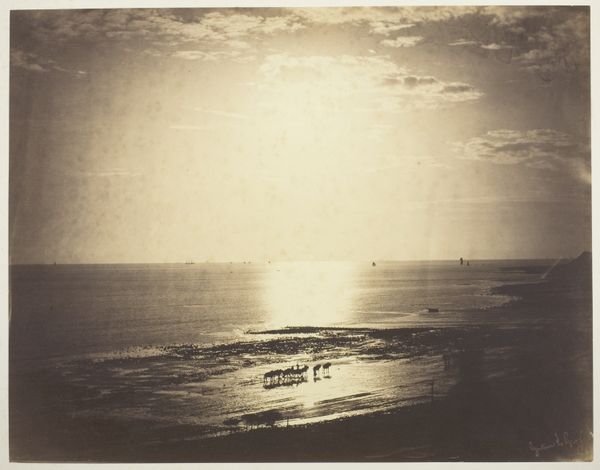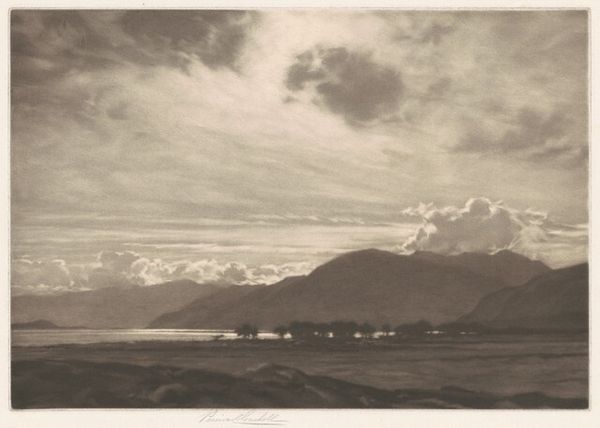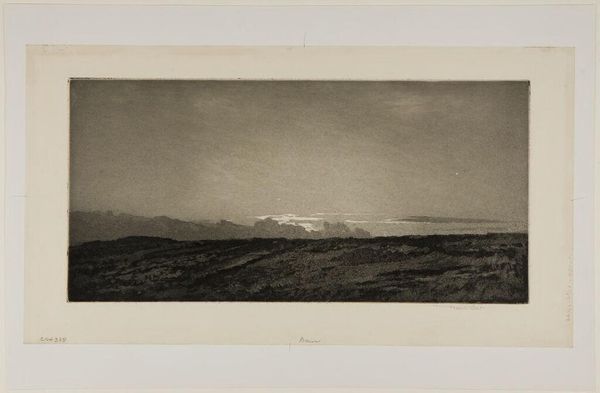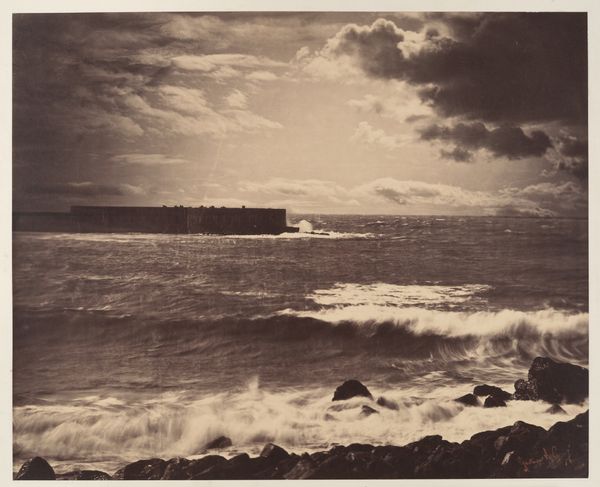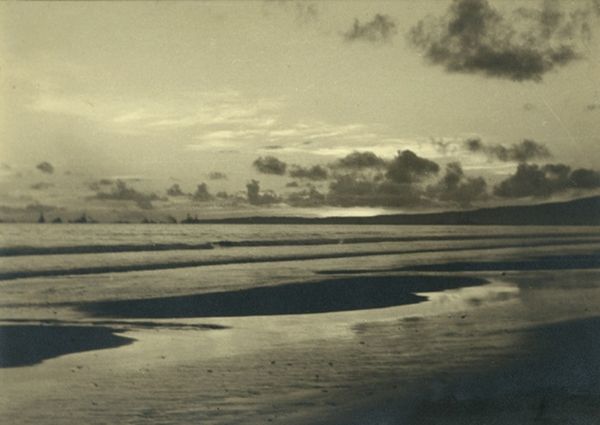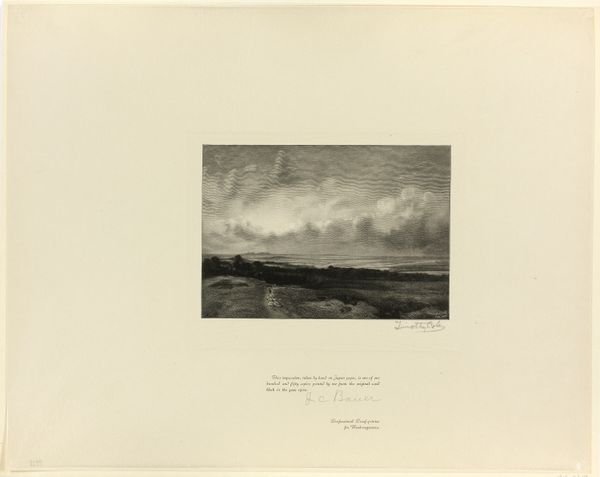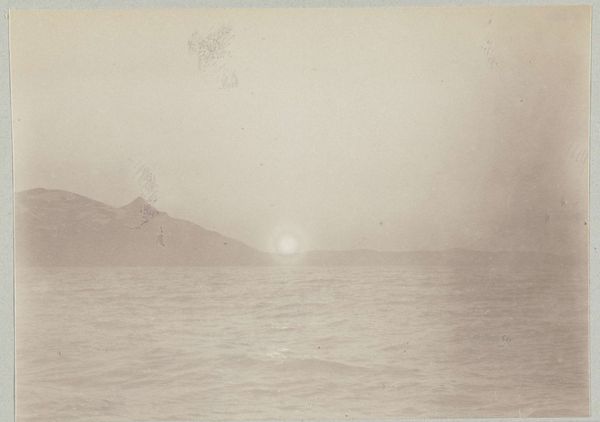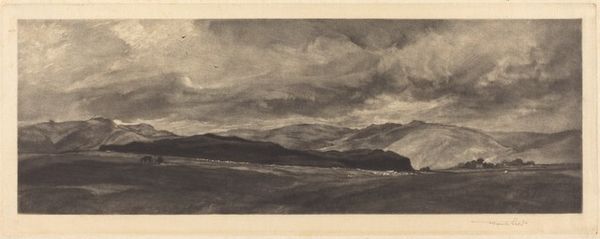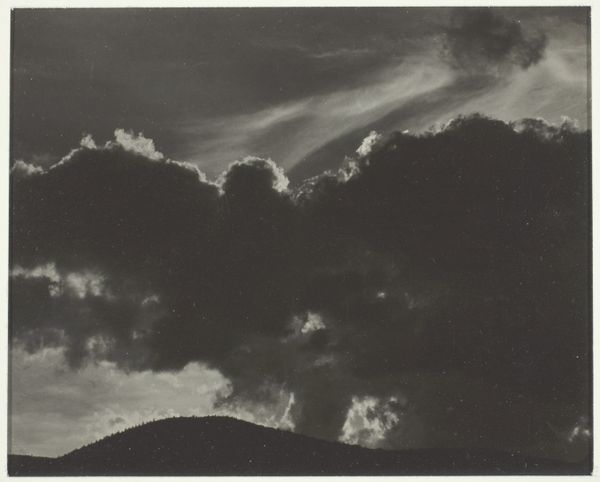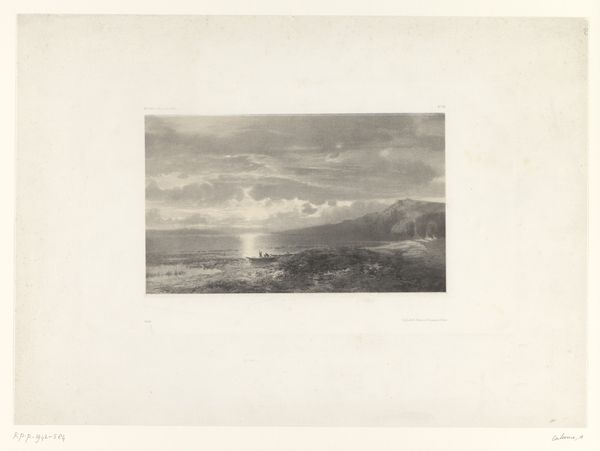
print, photography
#
pictorialism
# print
#
landscape
#
photography
Dimensions: plate: 22.23 × 30 cm (8 3/4 × 11 13/16 in.) sheet: 33.97 × 46.04 cm (13 3/8 × 18 1/8 in.)
Copyright: National Gallery of Art: CC0 1.0
Curator: “Stormy Weather,” a photographic print from the 1920s by Percival Gaskell; my first impression is one of impending drama, but softened—almost romanticized—by the sepia tones and soft focus. What strikes you? Editor: I’m drawn to how tactile it feels, almost like a lithograph. The materiality, that soft, grainy texture achieved in early photography, adds a certain weight to the turbulent atmosphere. Curator: Exactly! It comes from an era grappling with industrialization, so situating photography, and indeed landscape photography, as a vital, visual voice feels significant, doesn't it? Early 20th-century notions of idyllic rural spaces… Editor: … spaces simultaneously shaped and threatened by modern methods. Think of the labour extracted from those very landscapes, a material cost often glossed over by pretty pastoral scenes. This feels aware, somehow. Curator: In its awareness it captures something so essentially human: nature is not just the background, it’s not just about the scenery. It holds deep implications of gender, race, class and privilege—where we situate ourselves in the landscape speaks volumes. Editor: Gaskell's artistic choices—the printing process itself—becomes part of this conversation. The soft focus softens the stark realities of exploitation, while the act of photographing, selecting, and printing implicates him as both observer and participant. The craft is essential to the interpretation. Curator: You make me think about who would have had access to create and collect images like these. The consumption, the access, points to very particular hierarchies. Editor: Absolutely. Considering those early photographic processes underlines photography's role in shaping perspectives. Its accessibility, compared to painting or sculpture, also meant its consumption by a broader social strata which made it an ideal tool to build social memories and convey feelings about one’s homeland or aspirations, even for those excluded from landscape ownership. Curator: Thinking through its textures and social contexts gives us a much richer understanding of the scene. Thanks! Editor: My pleasure, reflecting on the raw materials of both image and lived experience, and hopefully deepening our appreciation for those whose hands literally made that beauty possible, is critical.
Comments
No comments
Be the first to comment and join the conversation on the ultimate creative platform.
